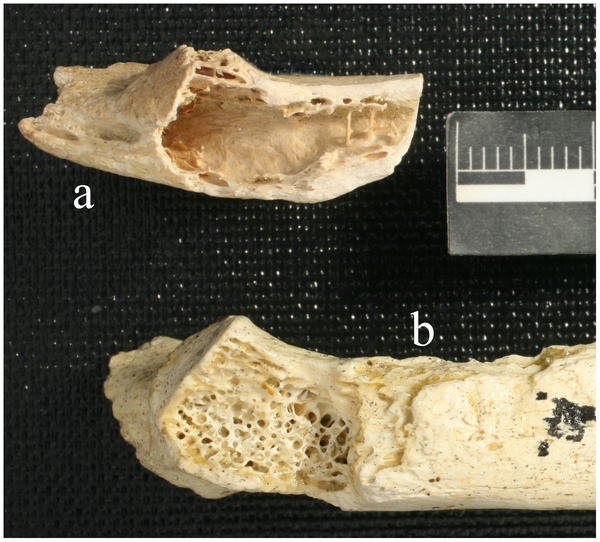A new article in
PLoS ONE by Janet Monge and her colleagues reports the discovery of
fibrous dysplasia on a 120,000-year-old Neandertal individual from Krapina. Fibrous dysplasia is a benign cancerous disorder that manifests as abnormal bone growth.
 |
| Krapina 120.71 in caudal view (a). The large lesion is located above the tubercular facet and extends laterally. The trabeculae have been destroyed and the cortex appears expansive. The thin cortical bone forming the superior surface of the cavern was broken away postmortem. (b) Krapina 120.6 shows the normal pattern of bony trabeculae in the medullary space. The surface irregularities are postmortem. Caption from Monge et al. (2013: Figure 1). |
What's really interesting here is that these sorts of disorders are very rare in the archaeological record. The earliest examples were, until now, only about 1,000-4,000 years old. While it's difficult to determine what caused the tumor, it does demonstrate that these sorts of abnormalities are not found solely with modern pollutants that are often thought to be responsible for the high rates of cancers among contemporary populations.
References:
Monge, J, Kricun, M, Radov
čić, J, Radov
čić, D, Mann, A, Frayer, DW. Fibrous dysplasia in a 120,000+ year old Neandertal from Krapina, Croatia. PLoS ONE 8, e64539.

